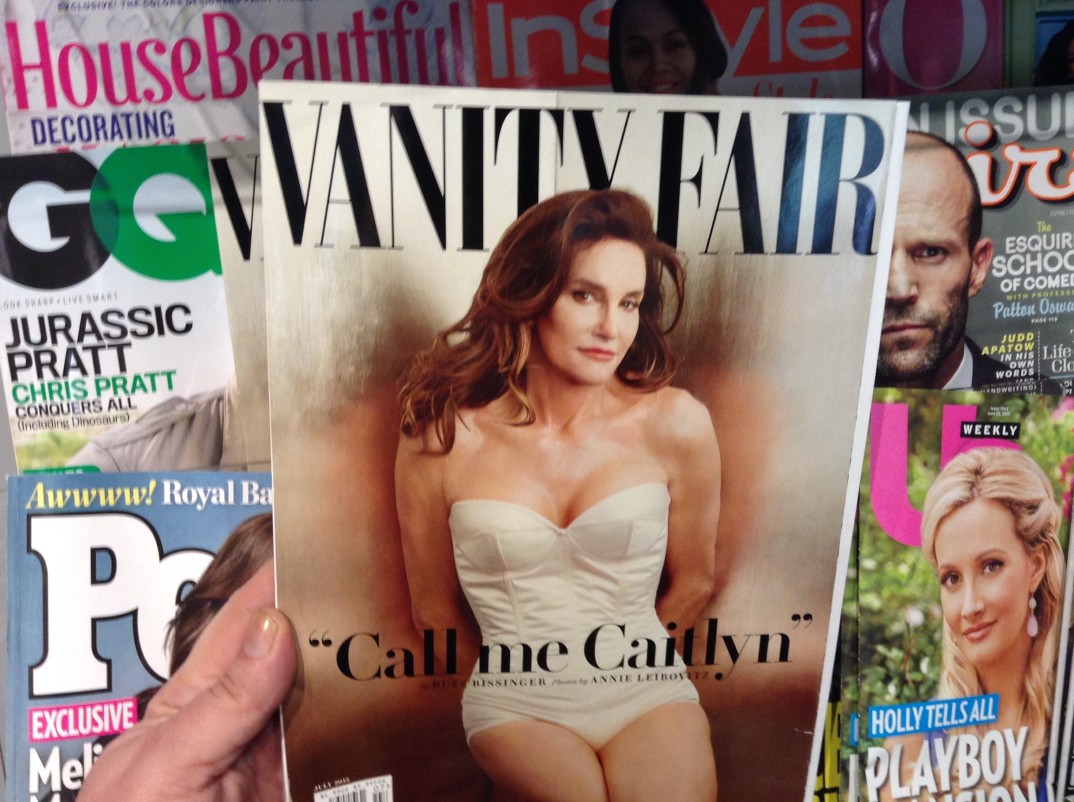On Saturday September 5, a gender-reveal party gone-wrong set fire to a California forest, burning down thousands of acres over the following week. This is not the first time a gender-reveal party has led to a major wildfire, nor is it the first time one has been responsible for threatening human life. Gender-reveal parties are largely a product of 20th century natal care medical advancement. The El Dorado fire has renewed debates around gender-reveal parties and the ethical questions that surround them.
Does prenatal sex discernment do more harm than good? Should gender-reveal parties be banned? And what value is there, if any, in determining sex before birth?
While there is evidence that humans have attempted to predict the gender of an unborn fetus for thousands of years, the integration of ultrasound technology into prenatal care in the 1960’s radically improved the accuracy of predicting fetal gender. Typically, gender is determined using an obstetric ultrasonography which can be up to 98%-100% accurate.
The practice of determining a child’s sex before birth is relatively uncontroversial in the United States, but it has been banned in parts of the world where this information has been used to initiate abortion. Because of women’s economic marginalization and lack of socioeconomic mobility, in some places girls are considered an economic burden compared to boys. The preference for boy babies has led to sex-selective abortion and an imbalance in the sex ratio in countries such as India and China. Studies have found that an imbalance in sex ratio favoring males, has been correlated with many other social problems such as human trafficking and an increase in violence against women. In order to combat these rising sex ratios both India and China have previously banned, or severely limited, the practice prenatal sex discernment. Despite these attempts to discourage sex-selective abortions, there still exist many concerns that regulations have not gone far enough.
Prenatal discernment in the United States has not led to sex selective abortion in the way it has in the rest of the world, but it has become a cornerstone of the pregnancy process. In a 2001 study of expectant parents, more than half of both men and women expressed a desire to know the sex of the fetus. Interestingly, researchers also found that there were sharp differences in desire to know the sex of a fetus across ethnicity, age, race, and marital status indicating that at least some of our desire to know the sex of our child comes from cultural or social influences.
While knowing the sex of a fetus does not mean a parent will necessarily have a gender reveal party, gender reveal parties certainly necessitate prenatal discernment. In the 2010’s gender reveal parties in the United States have become strikingly common. Pregnant women and their partners perform some type of ceremony in which gendered objects or colors are revealed to indicate whether the child will be male or female. This practice might seem strange to many, considering the fact that the medical process in determining the sex of the child is medical and very private in many cases.
But the point of gender-reveal parties is not simply to find out the gender of a future child, but in many cases, as Lindsey King-Miller of Vox describes, “to make a spectacle…like all kinds of social media challenges, gender reveals are made to be recorded.” By their very nature, these spectacles often involve pyrotechnics, complicated machinery, and other forms of entertainment more commonly found at an amusement park rather than one’s backyard. Perhaps this is why gender reveal parties have led to so much destruction in modern history, with critics such as Arwa Mahdawi arguing that “gender reveal parties are a form of domestic terrorism.”
The practice of gender-reveal parties has clearly led to many negative and unethical consequences. However, this is not the only reason that many find them to be morally abhorrent. Critics argue that at their core, gender-reveal parties perpetuate sexism and transphobia, exclude intersex people, and contribute to our relentless obsession with defining people within a gender binary. These parties are often rife with gender stereotypes, with themes like “Touchdowns or Tutus.” Gender-reveals also fail to acknowledge the crucial distinction between gender and sex. As psychologist Daniel L. Carson explains, “Gender is the social, behavioral, and psychological characteristics that we use to distinguish the sexes…By definition, parents have no idea what the gender of their child will be since they have yet to interact with the child.” The distinction between gender and sex has been recognized by Western sociologists, medical professionals and psychologists since at least 1987, with the establishment of “Gender and Society” and the publication of the groundbreaking article, “Doing Gender.” Today, the World Health Organization defines gender as “characteristics of women and men that are largely socially created” while sex on the other hand is “encompasses [differences] that are biologically determined.” This difference is important in understanding both the ways in which our experience of the world is impacted by our biology as well as by social stereotypes associated with our gender. It is also crucial to recognize this difference to acknowledge that not all who are biologically male or female identify with the “corresponding”, or cis, gender. Recognizing and honoring this difference is imperative for ensuring the rights of transgender, genderqueer, and non-binary people. Choosing to undergo prenatal sex discernment or host a gender-reveal party does not necessarily mean one does not understand or support the difference between sex and gender. However, it could be indicative of one’s overall attitudes toward those different from them, and toward stereotypes associated with sex and gender in general. A 2014 study, for example, found that those women who chose not to undergo prenatal discernment, tended to be “open to new experiences, and combine egalitarian views about the roles of men and women in society with conscientiousness.”
Gender-reveal parties are not the only form of American ritual that has been enabled by prenatal discernment. Companies, such as the Gender Reveal Game, have built an entire profit scheme around providing a platform for parents-to-be to encourage their loved ones to place bets on the sex of their child. Baby showers, a common custom where friends and family “shower” expectant parents and unborn children with gifts before birth, arguably center on goods like clothing and toys which are heavily marketed and designed to be appropriate for a baby depending on their sex. Anyone who has attended a baby shower can attest to the fact that it is much more challenging to find gender-neutral toys and clothes for expectant parents. In fact, experts have reported that children’s toys are more divided by gender now than they were 50 years ago. While some progress is being made on the front of gender-neutral children’s clothing, industry experts affirm that the vast majority remains gendered, beginning in infancy.
But is wanting to know the gender of an unborn child necessarily immoral? Some might argue not. As mentioned earlier, there were sharp divisions in parents wanting to know the sex of their child based on ethnic, racial, age, and marital status. For some, knowing the gender of one’s child before birth might be religious and traditional. Knowing a child’s gender might also help parents decide which name to give their child, depending on their cultural or religious background. Additionally, knowing the gender of a child might be a way to ease anxiety during pregnancy. It is especially important to note that in the 2001 study mentioned above, the two groups with the highest desire to know the sex of their unborn child were pregnant women below the age of 22, at 98% and single-mothers at 90%. Being pregnant at a young age, or without a partner to help raise the child undoubtedly creates a lot of uncertainty. Knowing the sex of the child might be one way for these expectant mothers to ease anxiety during pregnancy.
In an article in Today’s Parent, Dave Coodin, father-to-be, explains his decision to partake in prenatal discernment. He explains both that prior to knowing the sex of his child, he and his partner referred to the baby as “it” which was rather dehumanizing. He also explained that by knowing the sex, he was able to conceptualize a part of his baby’s identity in a manner that allowed him to “construct fantasies that satisfy us in the present, no matter how crazy and deluded.” Pregnancy is certainly a long and difficult process, and some might agree with and sympathize with Dave’s desire to know at least one potential aspect of his future child’s identity. In a 2015 research paper, Florence Pasche Guignard argued that gender reveal parties have filled a role “where neither medical nor religious institutions offer ritual options deemed appropriate enough for celebrating joyfully and emotionally during pregnancy.” While there doesn’t seem to be anything inherently wrong with celebrating during a pregnancy, critics might still push back that it isn’t the celebratory nor ritualistic aspect of prenatal discernment and gender-reveals that is the problem, but rather the desire to define a human being, and a baby, based on its sex.
Regardless of what one believes about gender-reveal parties, the tide is certainly turning on emphasizing gender in children in general, with about 1 in 5 American parents supporting gender-neutral clothing. In fact, even the woman credited with starting the gender-reveal party trend back in 2008 has become a vocal critic of the phenomenon. In a viral Facebook post from 2019, Jenna Karvunidis asserted “Assigning focus on gender at birth leaves out so much of their potential and talents that have nothing to do with what’s between their legs.” In a rather ironic quip, she concluded by revealing, “PLOT TWIST, the world’s first gender-reveal party baby is a girl who wears suits!”



